


The History of R&B Part 2: The Motown Era (1959-1969)
The 1960's soul and R&B music reflected the times of optimism, social change, pain, joy, and creativity at the same time. The start of the 1960's was massively different than the late 1960's. Early 1960's music had a Motown touch with men and women wearing their Sunday-best clothing. Ballads about love plus romance were commonplace from the Supremes, the Temptations, Stevie Wonder, Otis Redding, Jackie Wilson, Smokey Robinson, Jimmy Walker and the All Stars, Eta James, and the Miracles, and the Four Tops. With the growth of the Civil Rights Movement, the counterculture, and the anti-war movements, music did evolve to promote more political causes like the songs from the Impressions (whose lead singer Curtis Mayfield would change music forever). The 1960's expressed diverse styles of R&B, even proto-funk by the 1960's with people like Sly and the Family Stone and other artists. Aretha Frankin spoke about the dignity of a woman with songs like Respect. Aretha was an active member of the Civil Rights Movement along her father, who was a preacher plus friend of the late Dr. Martin Luther King Jr. With the Tet Offensive, assassinations of heroic people, protests, and rebellions, everything that we see now in 2020 is a reflection of the 1960's. Militancy was the order of the day by the late 1960's. The activism of the Black Panther Party for Self-Defense captivated our people plus others. Love of Blackness was shown in James Brown's revolutionary song of: "I'm Black and I'm Proud." That song would inspire the youth to love their God-given Blackness a great deal. Dynamic soul encompassed the expression of musicians from the Marvelettes to Odetta. There is no way that any human being can have a comprehensive look at music in general without listening plus studying the music of the the 1960's period. Staxx Records and Jimi Hendrix's sounds flourished during that time period too. The demand for social change outlined the essence of the human urge to be free. Oppression of any kind is wrong, and the 1960's R&B have shown the power of the black human spirit. In 2020, we continue to fight for the prize of liberation.

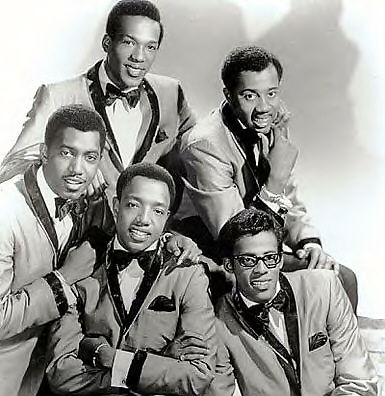
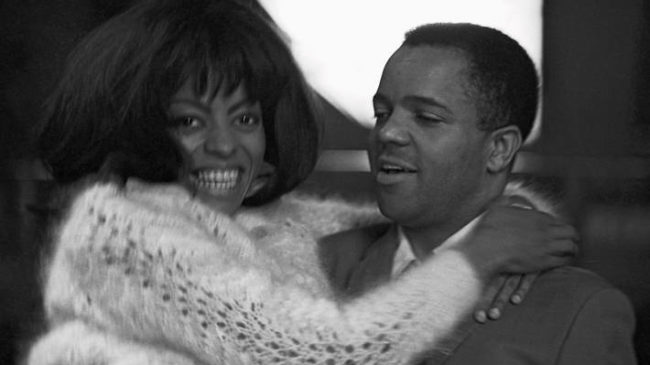
Motown Starts
Motown is a word that stood the test of time as a large part of music. It showed music made by African Americans, and its songs have been beloved by people of every race or color. It broke down barriers and has been embraced by human beings globally. Also, it gave many musicians opportunities to not only tour the world. It gave them the chance to fully express their own personal identities. When you think of the music of the 1960's, you think of Motown constantly. It was created by Berry Gordy Jr. as Tamla Records on January 12, 1959. It was Incorporated as Motown Record Corporation on April 14, 1960. It was originally an American American owned record label. It promoted soul music, pop, and R&B. Universally, people from across genres of music loved Motown. By 2018, Motown was inducted into the Rhythm and Blues Music Hall of Fame in a ceremony held at the Charles H. Wright Museum at Detroit, Michigan. Berry Gordy is a businessman. He made a record store called the 3D Record Mart. Gordy visited Detroit's downtown nightclubs to study music. Later, he was a songwriter. He, his sister Gwen Gordy, and Billy Davis wrote songs for Jackie Wilson. Wilson's first hit was Reet Petite from November of 1957. Gordy helped to write Lonely Teardops in 1958. Berry Gordy and his siblings Ann, Gwen, and Robert helped to write many forms of music for artists. Smokey Robinson met Gordy in 1957. Smokey was just 17 when he was in the group called the Matadors. Gordy loved doo-wop. Smokey was in the Miracles too. Anna Records was made by Gordy and his sister Gwen on April 1959. Gordy and secretary Janie Bradford wrote Barrett Strong's Money (That's What I want). Smokey Robinson was the vice President of Talma. Hitsville USA was the first headquarters of the Motown company. Motown signed Mable John, Eddie Holland and Mary Wells. By 1960, the Miracles' Shop Around was the first number R&B hit in 1960. The Marveletts hit Please Mr. Postman was famous in 1961. From 1961 to 1971, Motown had 110 top 10 hits. By 1960, Marvin Gaye signed with Motown. The Twist was popularized by Chubby Checker. In 1961, the Temptations signed with Motown. They were once the Elgins. Stevie Wonder signed with them too.

The Supremes signed with Motown, and they were once called the Primettes. Eddie Holland recorded "Jamie." In 1962, Brian Holland, Eddie Holland, and Lamont Dozier started to work as songwriting, music production team. Motown toured the East Coast and the South with their Motor town Revue. Groups like the Miracles, Martha and the Vandellas, the Supremes, Mary Wells, Stevie Wonder, Marvin Gaye, the Contours, the Marvelettes, and the Choker Campbell Band. The Contours released Do You Love Me. Demos grew by 1963. Mary Wells was on American Bandstand with Dick Clark in 1963. Martha and the Vandellas were nominated for Love is Like A Heatwave. The song was written by Brian Holland, Lamont Dozier, and Edward Holland Jr. The Motown's Artist Personal Development started in 1964. Maurice King, Maxine Powell, and Cholly Atkins worked with artists. The Miracles perform in London in the same year. Smokey Robinson and Bobby Rogers of the Miracles wrote the Temptations hit The Way You Do the Things You Do.
On December 11, 1964, the talented singer Sam Cooke passed away. He was an American singer, songwriter, civil rights activist, and entrepreneur. Clarksdale, Mississippi was the place of his birth, as his birth was on January 22, 1931. He could sing, play the guitar, and toured the world. Back in the early 1960's, he was called the King of Soul. Some of his greatest songs were You Send Me, A Change is Gonna Come, Cupid, Wonderful World, Chain Gang, Twistin' the Night Away, and Bring it On Home to Me. His distinctive vocals contributed to many soul artists' growth like Aretha, Bobby Womack, Al Green, Curtis Mayfield, Stevie Wonder, etc. He was raised in Chicago. Sam Cooke sang gospel, as his father was a preacher. From 1957 to 1964, he had many popular songs. Sam Cooke was one of the first modern black performers and composers to work on the business side of the music industry to promote ownership of resources. As early as 1956, his first pop/soul single was Lovable. In 1961, Sam Cooke created his own record label called SAR Records (with J. W. Alexander and his manager, Roy Crain). The label had artists like the Simms Twins, the Valentinos (who were Bobby Womack and his brothers), Mel Carter, and Johnnie Taylor. Etta James and Muhammad Ali were some of Same Cooke's friends. Sam Cooke was a great songwriter, and he focused on creating singles. Sam Cooke was not perfect, and I make no justifications for his mistakes. His death has been disputed. What we do know that he died in Los Angeles by one gunshot wound to the chest. Many women (like Bertha Franklin and Elisa Boyer. In 1979, Elisa Royer was found guilty of the 2nd degree murder of her ex-boyfriend. Bertha Franklin shot a patron at the Hotel six months prior to Cooke's death) were there at the time of his death, and they accused him of improprieties at the Hacienda Motel.
Sam Cooke's family and fans dispute those allegations to this day. Whatever the truth is, we are clear that we should always stand on acting righteous towards any human being that we encounter. In Chicago and Los Angeles, thousands of his fans lined the streets to mourn Sam Cooke's passing. When Etta James (a great singer) saw Cooke's body, she said that Sam was so badly beaten that he was almost decapitated on both of his hands were bruised plus completely crushed. She said that Cooke's nose was mangled. Sam Cooke lived for 33 years on this Earth. If you want to read a book that chronicles the life of Sam Cooke in a fair, accurate way, I do recommend the book, entitled, "One More River to Cross: The Redemption of Sam Cooke" by B.G. Rhule. The editors of the book are DONNA H. RICHARDS and JOANNA KATSUNE.
In 1965, Motown reached into new heights of power. Motown had its foreign label, Tamla-Motown in London. Brenda Holloway performed with the Beatles on their North American Tour. Motown released its first 8 track tapes. The Four Tops' I Can't Help Myself was released and the Supremes' "Stop in the Name of Love" was released in 1965. James Brown recorded, "Papa Got a Brand New Bag" in 1965 too. By this era of time, the British musical invasion sweep America with acts like the Beatles and the Stones. The irony is that many of these groups from the British invasions profoundly acknowledged the contributions of black artists that came before them in developing the sound of soul music, R&B, and rock and roll.
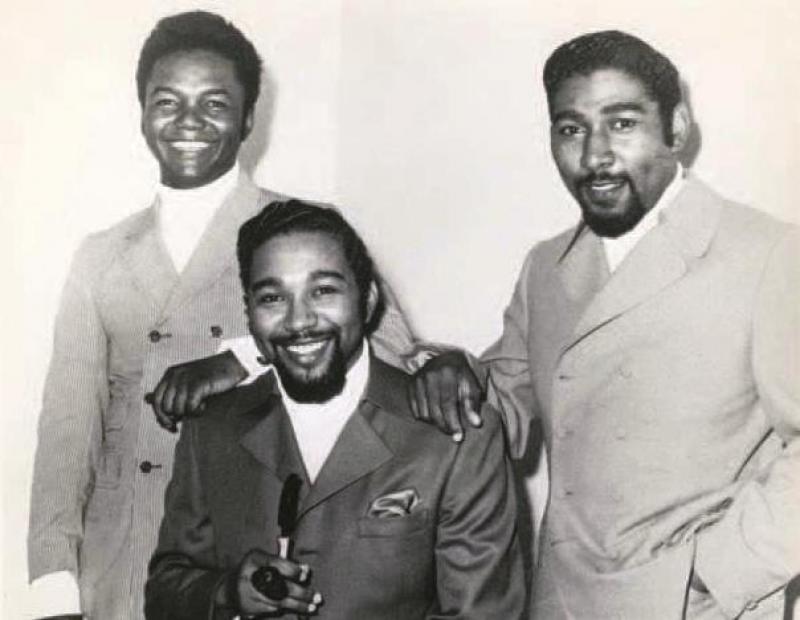

Black Musical Excellence
Black Musical Excellence during the 1960's was heavily abundant. Black Excellence isn't just found in the musicians of the 1960's. Many producers and other black people behind the scenes made 1960's music from Motown, Staxx, Columbia, and other record labels present black music to the world. Berry Gordy worked as clock work to promote talented artists. Motown artists made songs constantly all over the Hitsville studio in Detroit. One large part of Motown's success was the Holland-Dozier-Holland team. This was a songwriting and production team made up of Lamont Dozier and brothers Brian and Eddie Holland. They helped to create the Motown sound of the 1960's. They worked from 1962 to 1967 at Motown. Dozier and Brian Holland wrote and produce songs. Eddie Holland wrote lyrics and arranged the vocals. This team were involved in the 10 of 12 Supremes' 12 U.S. No. 1 singles like Baby Love, Stop! In the Name of Love, You Keep Hangin' On. They worked with The Four Tops and Michael Jackson. The Four Tops is an underrated group with the led single of Levi Stubbs. Levi Stubbs (1936-2008) was one of the greatest vocalists of all time. He was that great. The team also worked with the Marvelettes, Martha and the Vandellas, and Marvin Gaye. Norman Whitfield was another great writer and producer of the 1960's too. Brian Holland, Lamont Dozier, and Eddie Holland were inducted into the Michigan Rock and Roll Legends Hall of Fame in 2010.
Norman Whitfield (1940-2008) was credited as one of the creators of the Motown Sound and of the late 1960's subgenre of psychedelic soul. Maxine Powell was the woman who helped Motown's musicians to develop their character, fashion, and other aspects of their performance. She told the Supremes about talking, dressing, and eating food. Maxine Powell said the truth that each person is beautiful. She lived to be 98 years old. She worked with Marvin Gaye, Smokey Robinson, Tammi Terrell, and Stevie Wonder. Powell wanted to show the black excellence in the world by presenting the best out of artists. That is her gift. Smokey Robinson helped Motown with writing hit records too. Cholly Atkins was involved in the artistic development department as a dance teacher. Back in the day, many Motown artists were too rigid in their dance moves, so Atkins came about to help many artists to be more fluid in how they performed or danced on stage. His lessons worked. Cholly Atkins worked with the Temptations and the Four Tops. He also worked with the Pips and the Supremes. Honi Coles also worked with Motown musicians to improve their dancing skills. Atkins choreographed for the Temptations until his passing in 2003.
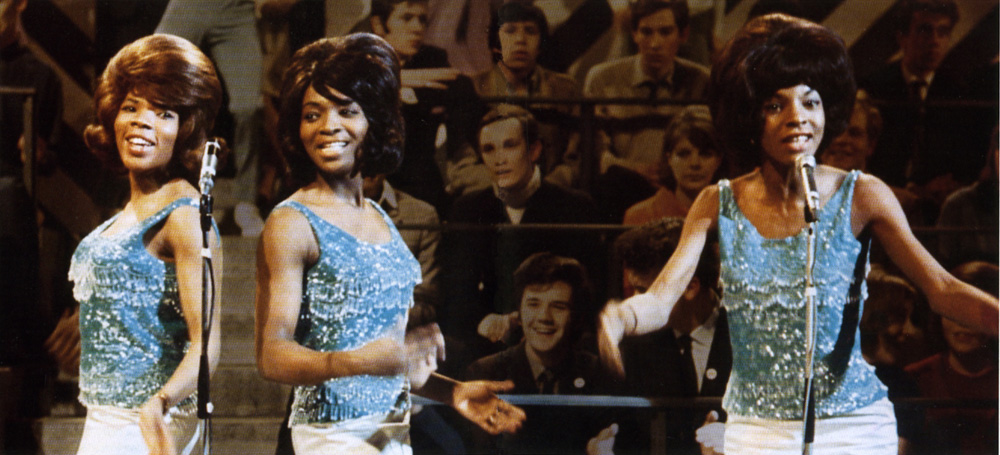
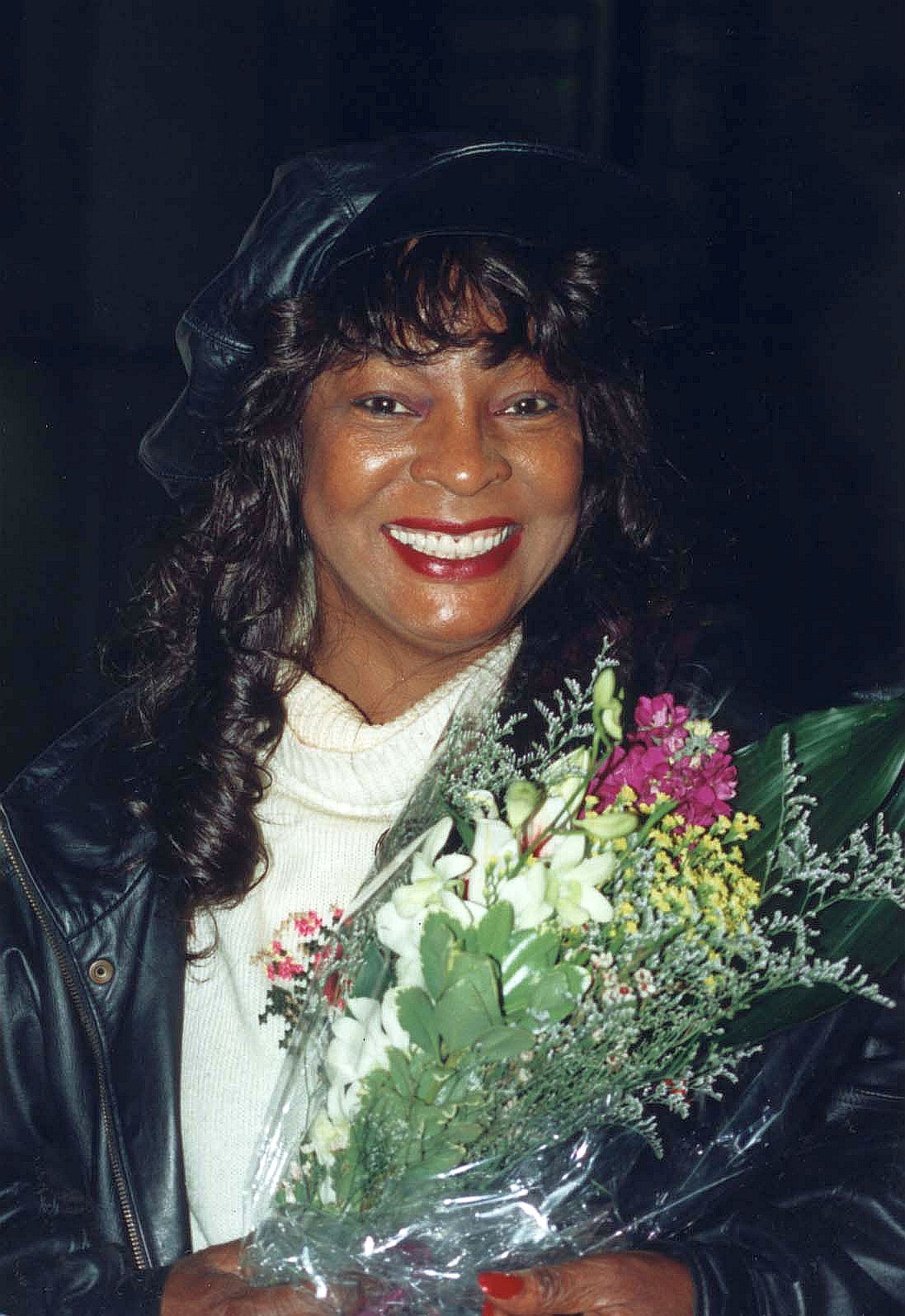
As a legend of R&B and pop music, her hits are well known. Martha Reeves was the lead singer of Motown's Martha Reeves and the Vandellas. This group had many classic singles like Come and Get These Memories, Heat Wave, Dancing in the Street, Nowhere to Run, etc. Martha Reeves was born in Eufaula, Alabama. She was the 3rd child of her parents' 11 children. Later, she moved into Detroit when she was a baby. Her grandfather was a preacher named Reverend Elijah Reeves. She was active in the church and their choir at Detroit's Metropolitan Church;. Martha loved Lena Horne and Della Reese. She was a fan of R&B and doo-wop music. She joined many groups like the Fascinations, the Del-Phis (with included Rosalind Ashford in 1957). Later, she joined the Vandellas. Martha Reeves made her solo career too. She became a born again Christian. Soul Train, The Midnight Special, and other shows had appearances from her. Touring the world is her specialty. She received an honorary Ph.D. in Humanities on November 25, 2012 at Detroit. She was induced into the Rhythm and Blues Hall of Fame as a solo artist on October 4, 2015. Reeves served on the Detroit city council. She defends musicians and their rights of getting better wages and royalties.


*The living legend Sister Valerie Simpson is 74 years old. She was born in the Bronx , New York City. She is the widow of the legend Nickolas Ashford. The couple met at Harlem's White Rock Baptist Church in 1964. They joined many groups, wrote songs, and were great producers. They loved Motown. Their love story is one of the greatest love stories of all time with their glorious love of music. Their duets were in songs like Solid in 1984, Found a Cure in 1979, etc. They wrote songs for the greats like Aretha Franklin, the 5th Dimension, Ray Charles, Marvin Gaye, Tammi Terrell, Diana Ross, and Gladys Knight & the Pips. Ashford and Simpson toured the world. Soul, creative power, and harmony encompass their musical legacy. Valerie Simpson released a solo album in June 2012 called Dinosaurs are Coming Back with the last recorded performance of Nina Simone, a second duet with Robert Flack, and an instrumental version of A'int No Mountain High Enough. She or Valerie Simpson is one of the greatest songwriters of all time. She was awarded an Honorary Doctorate of Music from Berklee College of Music. She loves her children. Ashford and Simpson were inducted in the Songwriters Hall; of Fame in 2002. Valerie Simpson continues to be a great blessings for so many human beings. Rest in Power to Brother Nickolas Ashford.


Stax Records
Stax Records is one of the most underrated record labels of R&B and soul music. It is based in Memphis, and people called it the area of Memphis soul. It has been part of a large movement of musical expression. It was founded in 1957, and shared its operations with Volt Records. Southern soul music was common back in the day. Stax helped to release gospel, funk, and blues records too. Jim Stewart and his sister Estelle Eaxton founded the record label. It had many ethnically integrated bands like Booker T & the M.G.'s. It also had a multiracial groups of artists and writers that was unprecedented during the 1960's. According to ethnomusicologist Rob Bowman, the label's use of "one studio, one equipment set-up, the same set of musicians and a small group of songwriters led to a readily identifiable sound. It was a sound based in black gospel, blues, country, and earlier forms of rhythm and blues. It became known as southern soul music." Otis Redding was the biggest artist on the label. He passed away in 1967. Its main rival was Motown Records in Detroit. Al Bell controlled Stax in 1968. It ended in 1975 because of financial solvency issues. Stax issued new singing acts again in 1978. It was reactivated in 2004. Current R&B and soul performers released material there. The Veltones made Fool in Love during the early years. Rufus Thomas and his daughter Carla made music. Their song was Cause I Love You. In 1962, Booker T. Jones (who could play many instruments) helped to expand Stax into the next level with drummer Al Jackson Jr., bassist Donald Dunn, and others. Isaac Hayes was also in the label back in the 1960's.
Redding's first single, "These Arms of Mine," issued in October 1962, hit both the R&B and the pop charts. Though the label had enjoyed some early hits with the Mar-Keys and Booker T. & the M.G.'s, Redding became the first Stax/Volt artist to consistently hit the charts with each release—in fact, each of Redding's 17 singles issued during his lifetime charted. (Carla Thomas also charted with some consistency, but her pre-1965 releases were on Atlantic, not Stax or Volt.). Between January 1962 and December 1964, Stax and Volt released several chart hits each by Otis Redding, Rufus Thomas, and Booker T. and the M.G.'s. However, despite dozens of other releases, only three other Stax/Volt singles charted during this time, and all just barely: William Bell's "You Don't Miss Your Water" hit #95 in early 1962; the Mar-Keys' "Pop-Eye Stroll" hit #94 in mid-1962 (although it was a big hit in Canada, hitting #1 on Toronto's CHUM Chart), and Barbara & the Browns' "Big Party" made it to #97 in mid-1964.

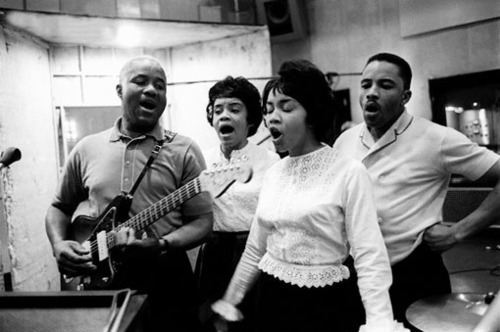
Beginning in 1965, when the label formalized its distribution agreement with Atlantic, Stax/Volt artists made the charts much more frequently. Later, Sam and Dave, the Mad Lads, and other artists came on the scene. Don Covay and Wilson Pickett recorded at the label too. Stax artists toured across America and in Europe. Stax broke with Atlantic records in 1968. Johnnie Taylor gave Stax its first big post-Atlantic hit in 1968 with "Who's Making Love", which became the label's best-selling single to that point. Producer and songwriter Isaac Hayes stepped into the spotlight with Hot Buttered Soul. Originally seen just as a solo artistic project for Hayes to make up the numbers, it went on to sell over three million copies in 1969. Stax had the Staple Singers too. Al Bell worked with Rev. Jesse Jackson and funded Operation PUSH. People know about Wattstax that was organized by the Stax label on August 20, 1972. It featured Richard Pryor when he was a young man. It was called Black Woodstock with over 100,000 mostly African American people there. It was made into a film released by Columbia Pictures in February of 1973. Artists as diverse as Shirley Brown and Elvis would work at Stax Records. Stax made an iconic movement that we appreciate to this day.
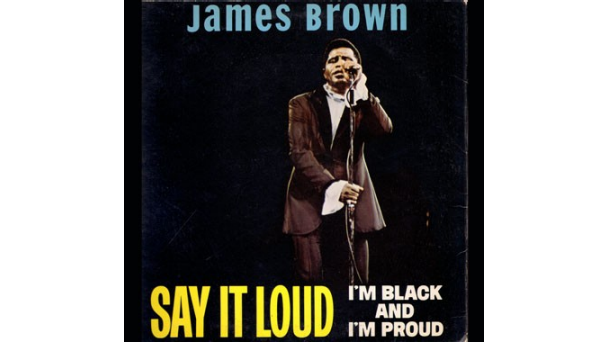

Artists assert themselves
By the time of 1966, American society was changing. Shows had more integrated audiences even in the South. Black music was the soundtrack of the lives of millions of Americans. Motown was already reaching new international acclaim. Yet, social justice activists like Ella Baker, Dr. King, Kwame Ture, Rosa Parks, Gloria Richardson, etc. continued to fight for change. By this time, the Civil Rights Movement at its core dealt with more complex issues of housing, education, police brutality, economic inequality, the Vietnam War, and other issues. The Black Power movement was reaching tons of young people. Music reflected this new reality in American society. In 1966, Norman Whitfield was producing the Temptations. Motown grossed $20 million. Motown signed many great artists like Gladys Knight and the Pips, Tammi Terrell, and the Isley Brothers. Nick Ashford and Valerie Simpson were staff writers at Motown. Stark Trek was born. Color TV started to be popular. I Spy was there. The Freedom of Information Act was signed by LBJ. The Black Panthers were created in 1966 as well. By early 1966, James Brown had a record called I Got You (I Feel Good). Joe Tex had A Sweet Woman Like You. Singles form Stevie Wonder, The Supremes, the Four Tops, and The Temptations dominated the charts in 1966. The Temptations had 4 chart topping records of Get Ready, Aint Too Proud to Beg, Beauty is Only Skin Deep, and I'm Losing You. June was when James Brown had the song of "It's a Man's Man's Man's World." Wilson Pickett was showing music. The Supremes had recorded like You Can't Hurry Love and You Keep Me Hangin' On. Stevie Wonder had Uptight and Blowin' in the Wind. Percey Sledge's When a Man Loves a Woman was an anthem of 1966. Sam and Dave's Hold On! I'm a Comin' was popular. Ray Charles and Lou Rawls expressed themselves with music in 1966 as well. It was a very soulful year indeed. Maurice King was also part of the Motown's artist development department too.



"...We, the Supremes, can’t take all the credit. The writers and producers at Motown gave us the music and sound that people loved. And then there was the glamour. My whole life is like a dream. I tell you – if I were not a Supreme, I would want to be a Supreme. I’m living the dream..."
-Mary Wilson
1967-1969
During the year of 1967, one woman dominated the charts. R&B music expanded greatly internationally. The most successful artist of 1967 was Aretha Franklin. She spent seven weeks at number one between March and May 1967 with the song, "I Never Loved a Man (The Way I Love You)." She released the song Respect in 1967 with 8 weeks in the peak position and the song Baby I Love You by the end of the year. By this time, she was on Atlantic Records. The Queen of Soul was already one of the greatest singers of all time by the 1960's. There were other artists who had number one hits for the first time in 1967 too. One was Aaron Neville. Aaron Joseph Neville is a legendary R&B and soul vocalist plus musicians. He had 4 platinum albums and he was born on January 24, 1941. New Orleans was the place of his birth. His niece is the famous journalist Arthel Neville. Aaron Neville's song Tell It Like It Is was powerful. Freddie Scott and Bettye Swan n had songs like Are You Lonely for Me and Make Me Yours respectively. The songs I Heard It Through the Grapevine by Gladys Knight & the Pips reached the top spot in the Billboard by December of December 1967. The Supremes was the greatest singing group of women during the 1960's and possibly of all time with music like Love is Here and Now You're Gone. The Supremes also had their funky tune in 1967 called The Happening. Sam and Dave's Soul Train was a classic example of excellent artistry. Martha and the Vandellas' Jimmy Mack described romance. Stevie Wonder further grown into his own with the song I Was Made to Love Her.
My September of 1967, James Brown had his music of Cold Sweat and Wilson Pickett had the song of Funky Broadway. Stevie Wonder in 1967 tours Europe, Motown had five major labels (Tamla, Motown, Gordy, Soul, and V.I.P.), and Dr. Martin Luther King's anti-war speech of "Why I Oppose the War in Vietnam." R&B in 1968 dealt with tons of somber songs, political songs, and songs of reflections about life in general. By 1968, Otis Redding had the posthumous number one with the song of Sittin' on The Dock of the Bay. Marvin Gaye dominated the charts in 1968 with Ain't Nothing Like the Real Thing, You're All I need to get bay both duets with Tammi Terrell. By the end of 1968, Marvin Gaye had his version of I Heard It Through the Grapevine." Archie Bell & the Drells had Tighten Up and Hugh Masekela had the song of Grazing in the Grass. Hugh Masakela was a South African trumpeter. 1968 saw new people on the top of the R&B charts like Tammi Terrell, the Intruders, the Dells, and Johnnie Taylor. One of the most revolutionary songs of all time was James Brown's "Say It Loud - I'm Black I'm Proud." The message of the song is self-explanatory. It wanted to promote Black Unity and being thankful of being Black as Black is Beautiful. It gave confident to black youth about the greatness of their black identity. The song was an anthem for the Black Panther movement. James Brown promoted black empowerment and self reliance. What I disagree with conservative black capitalism as promoted by Nixon, I do agree with James Brown in black empowerment and loving black identity.


It is important to celebrate the life of another legend. She is not here physically, but her legacy lives on as a heroic singer. Her journey in life's road has been rough. We know of the stories. Books, an episode from Unsung that I watched, and other sources documented her valleys. Yet, she was a kind soul who wanted love and respect as an equal human being. Her sound magnificently flourished despite the pain that she had experienced in her life. She was Tammi Terrell. Tammi Terrell was an icon of Motown music, and her wit plus strength were admirable. Every song from her was like a pure exercise of talent. One of her best friends was Marvin Gaye. Their chemistry as friends was undeniable. He was her support and vice versa. When Marvin Gaye was very shy back in the 1960's, Tammi Terrell inspired him to be more expressive with his personality. Tammi Terrell was from the streets of Philadelphia. Philadelphia is home to many soul singing legends then and now. She went into Germantown High School in Philadelphia. She sang duets with Marvin Gaye and made solo records. Your Precious Love is one of the great records from her. If This World Were Mine was another one of her classics too. Tammi Terrell was engaged to a real man named Dr. Ernest Garrett, who was a doctor. She passed away in 1970 of brain cancer at the age of 24 years old. Marvin Gaye, or his close friend, never gotten over her passing. Marvin Gaye was a real friend to her. Tammi's life signified the beauty of music, and how we have to do our part in treating our neighbors as ourselves. Tammi Terrell was a nice, gentle soul who only wanted peace and love.
Rest in Power Sister Tammi Terrell.
The Intruders had the Philadelphia soul sound which were be very prominent by the 1970's. Smokey Robinson and the Miracles had the hit of I Second that Emotion. Aretha Franklin's Chain of Fools On February, The Temptations' I Wish It Would Rain was extremely popular. By 1968, the Temptations were already on the Mount Rushmore of R&B groups. The Impressions's We're a Winner and James Brown's I Got the Feelin' made people dance all of the time. Jerry Butler and Stevie Wonder made more music. Love Child was a 1968 song released by Diana Ross & the Supremes. It was their 11th and penultimate number one single in the United States. This song was part of their album of Love Child. The theme of the song was a child born by an unmarried mother and the love of that child by the mother regardless. Back in the day, this subject matter was taboo, but the Supremes were courageous to talk about this important issue of humanity. The Supremes performed the powerful song on the Ed Sullivan Show on September 29, 1968. Some of the lyrics of the song are the following:
"...Don't think that I don't need you
Don't think I don't wanna please you
No child of mine'll be bearing
The name of shame I've been wearing
Love child, love child
Never quite as good
Afraid, ashamed, misunderstood
But I'll always love you..."
1969 was the final year of the 1960's. As with the times, music evolved into a more funk direction by 1969. Psychedelic R&B grew, and society was becoming more progressive with social movements flourishing. Marvin Gaye continued to make classic records like Too Busy Thinking About my Baby. James Brown had music along with the Temptations. James Brown increasingly used the funk style that was developed since the 1960's. Tyrone Davis had his single Can I Change My Mind. Sly & The Family Stone had the funk record Everyday People. Sly Stone had developed the funk and psychedelic soul into another level. The Isley Brothers, Joe Simon, and the Originals had their first numbers of the careers during 1969. Diana Ross and the Supremes released Someday We'll Be Together which was the prelude to the end of the Supremes with Diana Ross in the group. Jr. Walker and the All-Stars topped the chart with What Does it Take (To Win Your Love). Jerry Butler in April 1969 had the popular hit of Only the Strong Survive. The Isley Brothers had the 1969 song of It's Your Thing. Joe Simon, the Dells, Aretha Franklin, and the Originals had many of their records.
Marlena Shaw's version of California Soul is my favorite version of the song. Marlena Shaw is a great soul singer. 1969 also saw the Jackson Five perform at the Daisy Disco in Los Angeles with an Introduction from Diana Ross. Diana Ross promoted the Jackson Five and became a very close friend to Michael Jackson. 1969 was the birth of Michael Jackson and his family taking the country by storm with their inspirational music. In 1969, the Jackson Five released the single "I Want you Back." Michael Jackson had the led vocals in the song. It was performed on the band's first television appearances, on October 18, 1969 on Diana Ross's The Hollywood Palace and on their milestone performance on December 14, 1969 on The Ed Sullivan Show. The Jackson family blessed the world not only with their musical talent but with their grace and compassion for fellow people. The Temptations's I Can't Get Next to You was number one on the pop charts in 1969. 1969 saw R&B music in a new space with old school sounds plus mixed with new school flavor. The 1970's would see the greatness of music continue to come alive. 1969 saw the birth of Earth, Wind, and Fire too (they were the Salty Peppers back in 1969 with records like La La Time and Uh Huh Yeah).The Funk Brothers and other producers made some of the greatest music of all time.
` 
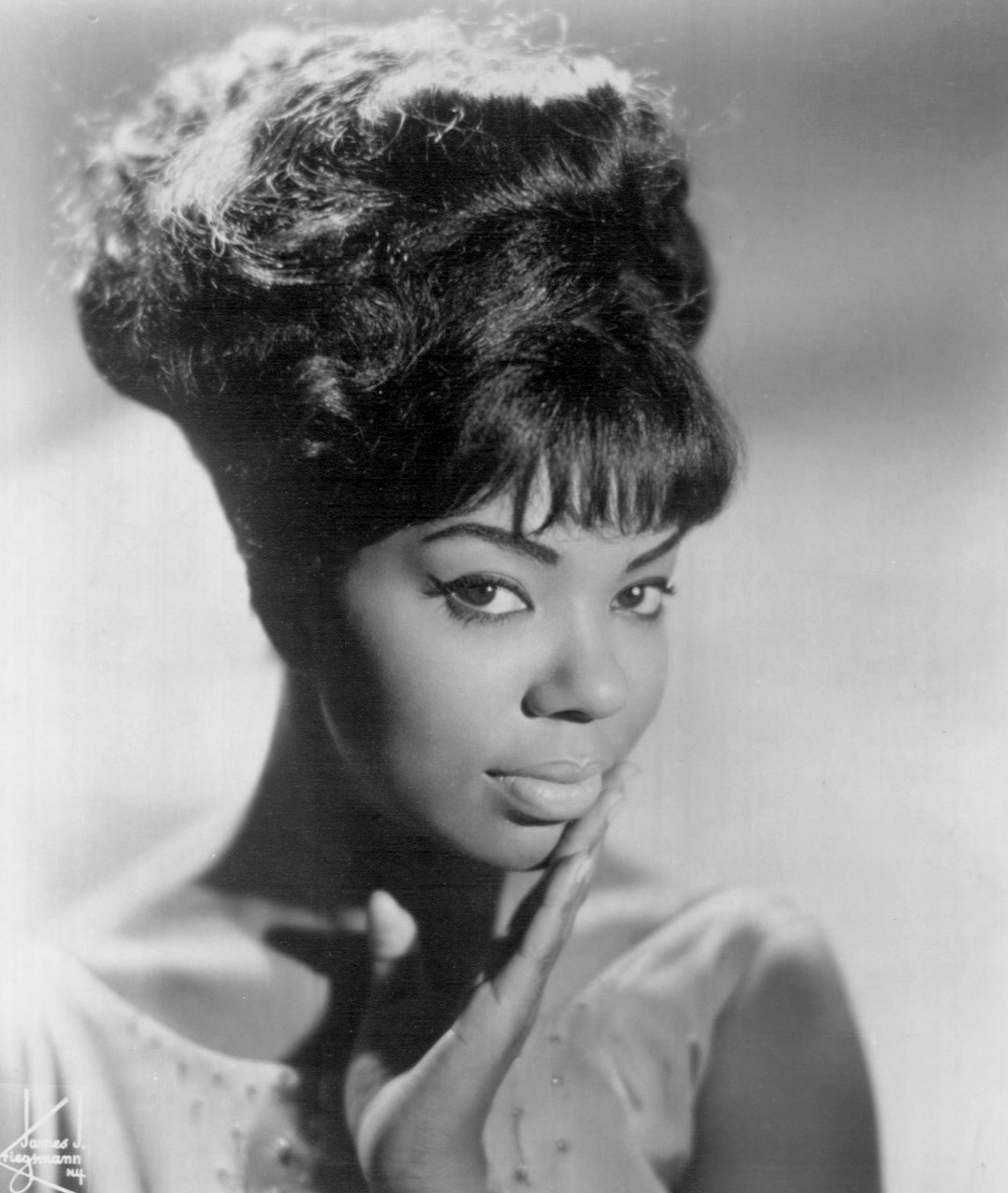

Conclusion
When it is all said and done, the 1960's had in my view some of the greatest music of all time. Its funk, its soul, and its creativity will always be timeless. The 1960's music can't be separate from the time period though. During that time, civil rights were fought for, the anti-war movement was powerful (with massive protests in 1967 and 1969 in places like New York City, San Francisco, and Washington, D.C.), and other minorities desired liberation. Freedom movements were abundant as the Jim Crow apartheid system was legally abolished. The 1960's music was dominated by Motown, Staxx, Atlantic, and other labels who knew of the consumers. As social movements became more potent, the music became more creative. The origin of disco, hip hop, funk, and modern music in generation have its roots or DNA from 1960's music. From the Supremes, Fontella Marie Bass, Major Lance, Ike & Tina Turner, Johnnie Taylor, Bobby Bland, Brook Benton, Smokey Robinson, Jerry Butler, Sam Cooke, Wilson Pickett, Mary Wells, The Marvelettes, Dionne Warwick, Etta James, Solomon Burke, Carla Thomas, Betty Everett, and to the Temptations, there was never a dull moment. From Jackie Wilson in 1960 to the Jackson Five in 1969, people danced to the music, celebrated life, and fought for profound social change. My parents loved the music from the Motown era with artists like the Temptations, Mahalia Jackson, and Martha and the Vandellas. Jackie Wilson and Sam Cooke brought more soul in the lives of the people. James Brown showed the world that being Black is Beautiful. The Supremes had charisma, talent, and grace.
Aretha Franklin stood up for our rights, so we could live in this generation found in 2020. Artists like Ray Charles, the Miracles, the Four Tops, The Drifters, Sam and Dave, Ben E. King, the Impressions, Booker T. the M.G.s, the Chi-Lites, Donny Hathaway (who had the song of I Thank you, Baby with singer June Conquest. Hathaway's other early single was The Ghetto Part 1 in 1969 too), the Shirelles, Jimi Hendrix, The Isley Brothers, The Midnighters, the 5th Dimension, and other unsung musicians excelled greatly. People can't sleep on artists like Barbara Lewis, Garnet Mimms & The Enchanters, The FIve Stairsteps, Percy Sledge, Dee Dee Sharp, Peaches & Herb, Eddie Floyd, Dinah Washington, Inez and Charlie Foxx, Ruby and the Romantics, Justine Washington, The Ronettes, Ramsey Lewis, and Maxine Brown. Many of these artists had gospel influences, as gospel is the cousin to R&B music. Also, many of these artists came from the South or their ancestors originated from the South. Many people of the Midwest and the North including the West had their ancestors from Mississippi, Alabama, Louisiana, Texas, Georgia, North Carolina, Virginia, and other places of the South. The Southern African American experience gave a lot of soul to R&B culture. I want that to be known too.
By Timothy
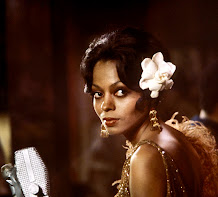


The upcoming Part 3 of the History of R&B series will describe R&B music of the 1970's filled with music from classic bands and disco. The next decade of the 1970's saw not only the end of the Vietnam War, but new movements of social change flourishing. From funk to the growth of contemporary R&B, the 1970's had the greatness of some of the greatest musicians of all time.


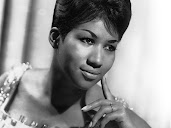
No comments:
Post a Comment